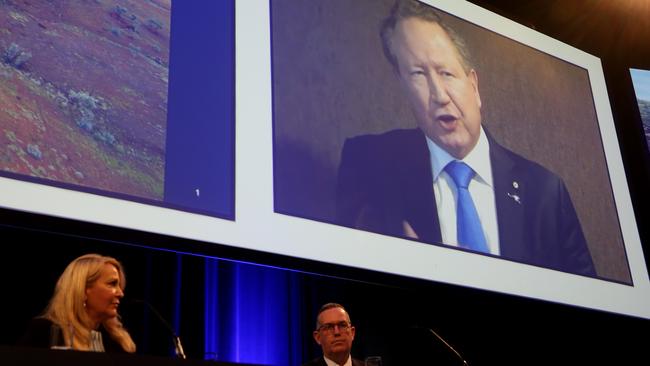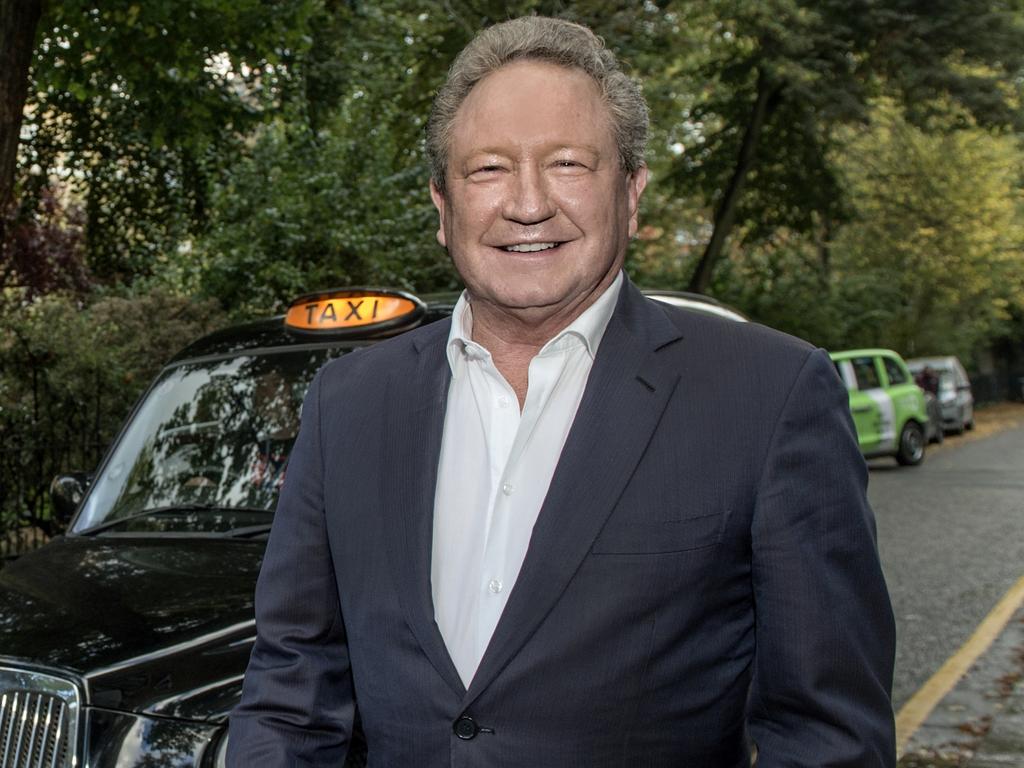Andrew Forrest faces first shareholder test of Fortescue’s green ambitions
Fortescue shareholders will get their first chance on Tuesday to question Andrew Forrest over the massive scale of the company’s green energy ambitions.

Fortescue Metals Group chairman Andrew Forrest will face the first major test of shareholder support for his ambitious plans to turn the iron ore major into a green energy powerhouse on Tuesday, a year after first unveiling the company’s grand plan to its owners.
Dr Forrest surprised the market a year ago when he told shareholders he wanted to transform the iron ore major into a competitor for global energy giants such as Chevron and BP, telling them he wanted to bet big on green hydrogen and ammonia.
At the meeting he outlined plans for the company to eventually produce 235 gigawatts of renewable energy – or about five times the current capacity of Australia’s National Energy Market.
Since then Dr Forrest and executives from the company’s Fortescue Future Industries subsidiary have been on a global green spree, signing deals across the world to investigate massive hydrogen and renewable energy projects in Africa, South America, Europe and even Russia.
While Fortescue has made a point of arguing that it has so far made no firm commitments to any of the FFI projects, Dr Forrest has been happy to put potential costs worth more than $US100bn ($135bn) on the public record.
Over the last year FFI’s staffing levels have grown from a relatively small team to more than 550 workers at the end of September – with sources suggesting the full figure could be closer to 700.
On Monday The Australian revealed that the total cost to build even a proportion of FFI’s project pipeline could top $US145bn.
Even though Fortescue has consistently said it would only fund those projects using external debt and equity investments, the scale and volume of FFI’s spree have led to a growing unease among Fortescue’s institutional shareholders.
Tuesday’s annual shareholder meeting offers the first opportunity for retail investors to question Dr Forrest and management about the plans since they were unveiled a year ago, as Fortescue looks to diversify beyond its traditional business as a pure-play iron ore producer.
Fortescue’s aggressive decarbonisation push has been welcomed by green groups and environmentally minded institutional investors as “industry leading”, and the company has escaped shareholder motions calling on it to toughen up its approach to greenhouse gas emissions faced by its peers.
But the company faces a motion put by the Australasian Centre for Corporate Responsibility (ACCR) calling on Fortescue to support a push by West Australian Indigenous groups to strengthen state heritage protection laws to “ensure Aboriginal people have meaningful involvement in and control over heritage decision-making”.
The push is aimed at supporting legislation which would give traditional owners the right to veto developments that would result in the destruction of significant heritage sites.
The ACCR has also put up a resolution to amend Fortescue’s constitution to allow shareholder resolutions at company meetings. The Fortescue board has recommended shareholders vote against both motions, arguing shareholders already have the right to express opinions and ask questions at its annual meeting.
Fortescue’s board recommendation said while it supports elements of the second motion – which is dependent on the constitutional amendment passing – and is committed to the modernisation of WA heritage laws, it cannot support legislation that would introduce the right of veto.
“In the event that agreement cannot be reached with the relevant Native Title owners, Fortescue is of the opinion that it is appropriate that the state government retains the role of decision maker, balancing the interests of all Australians,” it told shareholders. Fortescue shares closed up 6c at $14.33 on Monday.






To join the conversation, please log in. Don't have an account? Register
Join the conversation, you are commenting as Logout